.
De Beers Consolidated Mines Ltd. advertisement for diamonds: Salvador Dali, Life, 30 November 1953 (Gallery of Graphic Design)
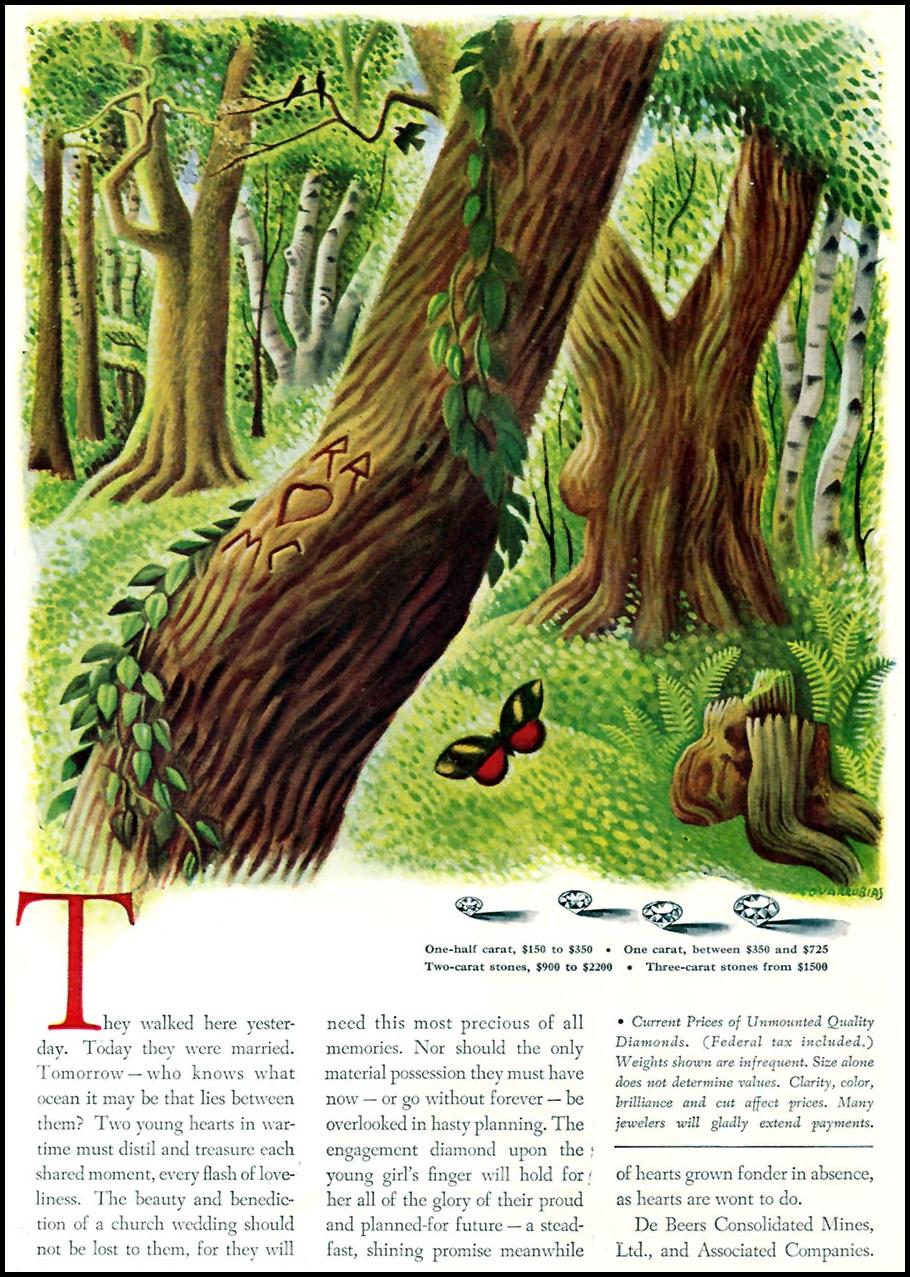
De Beers Consolidated Mines Ltd. advertisement for diamonds: Miguel Covarrubias, Time, 15 June 1942 (Gallery of Graphic Design)

De Beers Consolidated Mines Ltd. advertisement for diamonds: Herbert Saslow, Time, 1 June 1957 (Gallery of Graphic Design)

Textron Incorporated advertisement for Textron Lingerie: Frederick Siebel, Life, 15 November 1948 (Gallery of Graphic Design)
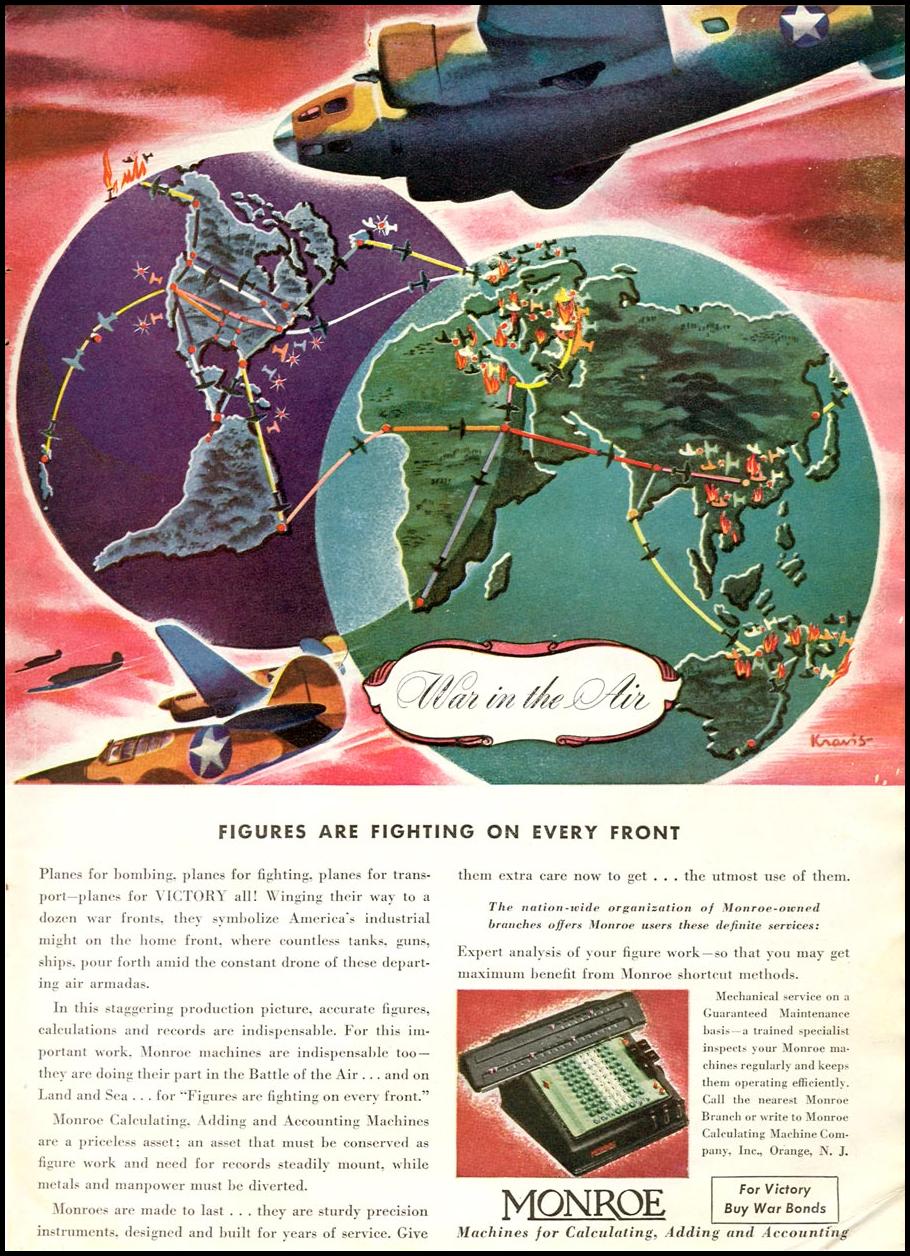
Monroe Calculating Machine Company advertisement for Monroe Calculators: Kravis, Time, 28 December 1942 (Gallery of Graphic Design)

Brown Shoe Company advertisement for Naturalizer Shoes: Bolin, Life, 21 February 1944 (Gallery of Graphic Design)

Container Corporation of America advertisement for product packaging: Art Kane, Time, 13 July 1962 (Gallery of Graphic Design)

Jantzen Knitting Mills advertisement for Jantzen Swim Suits: Pete Hawley, Life, 24 May 1943 (Gallery of Graphic Design)
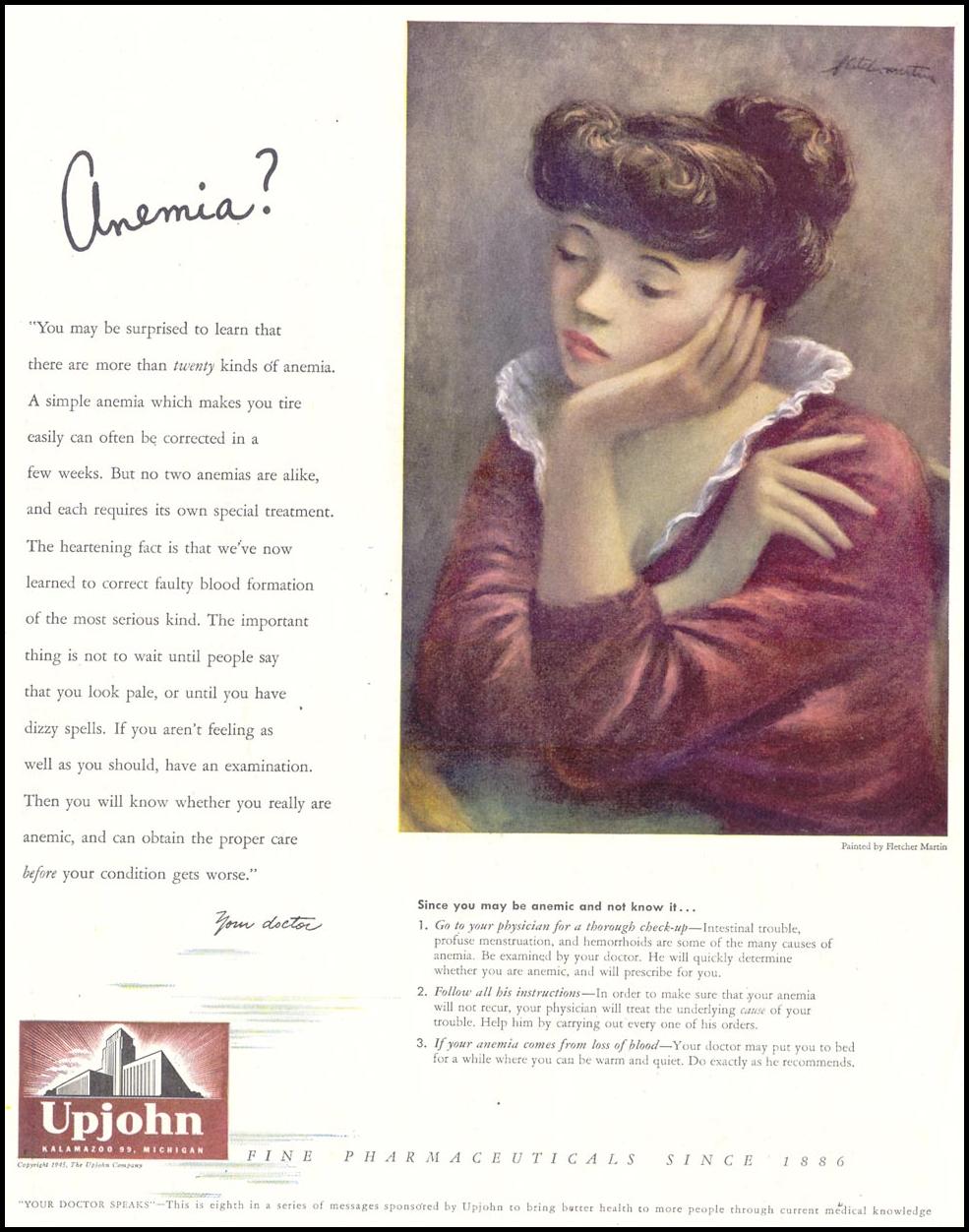
The Upjohn Company advertisement for Upjohn Pharmaceuticals: Fletcher Martin, Saturday Evening Post, 6 October 1945 (Gallery of Graphic Design)
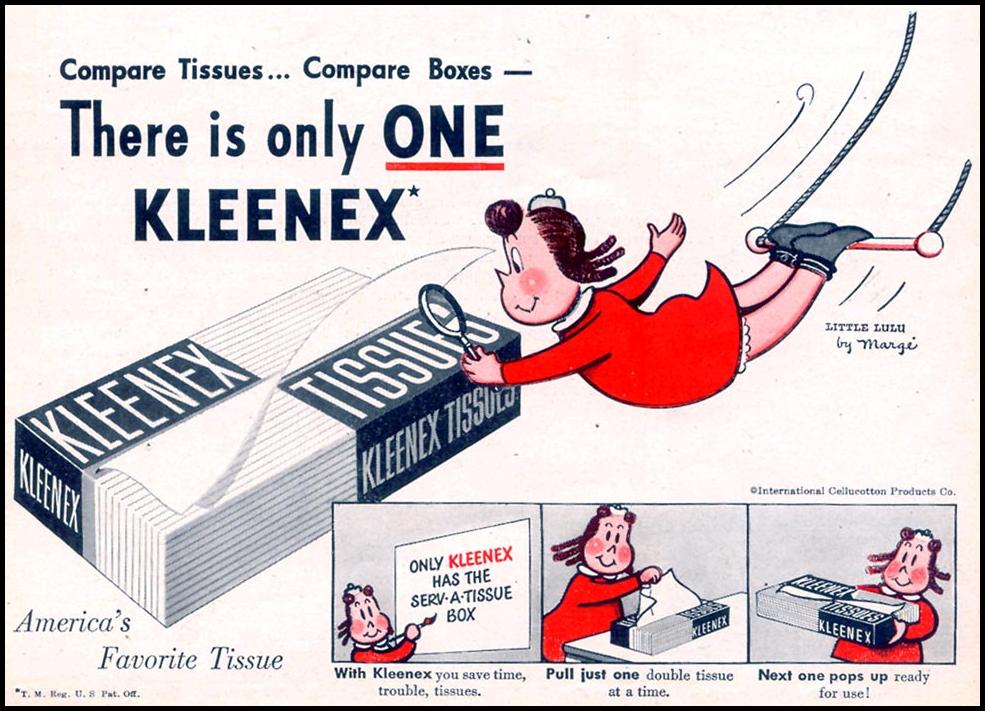
International Cellucotton Products Company advertisement for Kleenex Tissues: Marge, Woman's Day, 1 November 1948 (Gallery of Graphic Design)

Manning, Bowman Company advertisement for Manning Bowman Irons: Garrett Price, Life, 30 September 1940 (Gallery of Graphic Design)
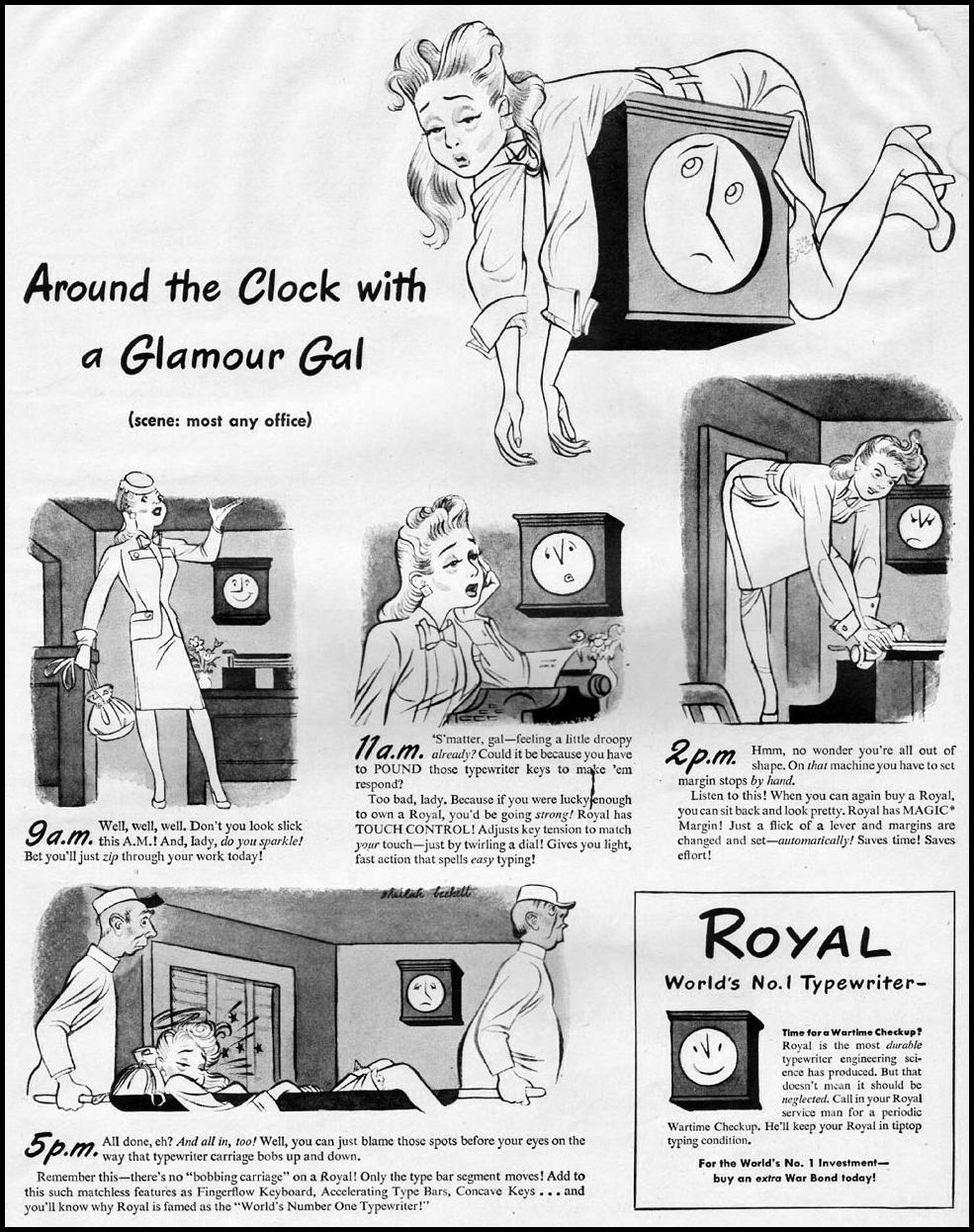
Royal Typewriter Company advertisement for Royal Typewriters: Sheilah Beckett, Life, 23 October 1944 (Gallery of Graphic Design)

Du Pont advertisement for Du Pont Zerex Anti-Freeze: Adams, Life, 11 October 1948 (Gallery of Graphic Design)


De Beers Consolidated Mines Ltd. advertisement for diamonds: Miguel Covarrubias, Time, 15 June 1942 (Gallery of Graphic Design)

De Beers Consolidated Mines Ltd. advertisement for diamonds: Herbert Saslow, Time, 1 June 1957 (Gallery of Graphic Design)

Textron Incorporated advertisement for Textron Lingerie: Frederick Siebel, Life, 15 November 1948 (Gallery of Graphic Design)

Monroe Calculating Machine Company advertisement for Monroe Calculators: Kravis, Time, 28 December 1942 (Gallery of Graphic Design)

Brown Shoe Company advertisement for Naturalizer Shoes: Bolin, Life, 21 February 1944 (Gallery of Graphic Design)

Container Corporation of America advertisement for product packaging: Art Kane, Time, 13 July 1962 (Gallery of Graphic Design)

Jantzen Knitting Mills advertisement for Jantzen Swim Suits: Pete Hawley, Life, 24 May 1943 (Gallery of Graphic Design)

The Upjohn Company advertisement for Upjohn Pharmaceuticals: Fletcher Martin, Saturday Evening Post, 6 October 1945 (Gallery of Graphic Design)

International Cellucotton Products Company advertisement for Kleenex Tissues: Marge, Woman's Day, 1 November 1948 (Gallery of Graphic Design)

Manning, Bowman Company advertisement for Manning Bowman Irons: Garrett Price, Life, 30 September 1940 (Gallery of Graphic Design)

Royal Typewriter Company advertisement for Royal Typewriters: Sheilah Beckett, Life, 23 October 1944 (Gallery of Graphic Design)

Du Pont advertisement for Du Pont Zerex Anti-Freeze: Adams, Life, 11 October 1948 (Gallery of Graphic Design)

Barbasol advertisement for Barbasol Shave Cream: E. Simms Campbell, Life, 8 November 1943
Barbasol advertisement for Barbasol Shave Cream: E. Simms Campbell, Life, 25 November 1946 (Gallery of Graphic Design)

Barbasol advertisement for Barbasol Shave Cream: E. Simms Campbell, Life, 16 September 1940 (Gallery of Graphic Design)
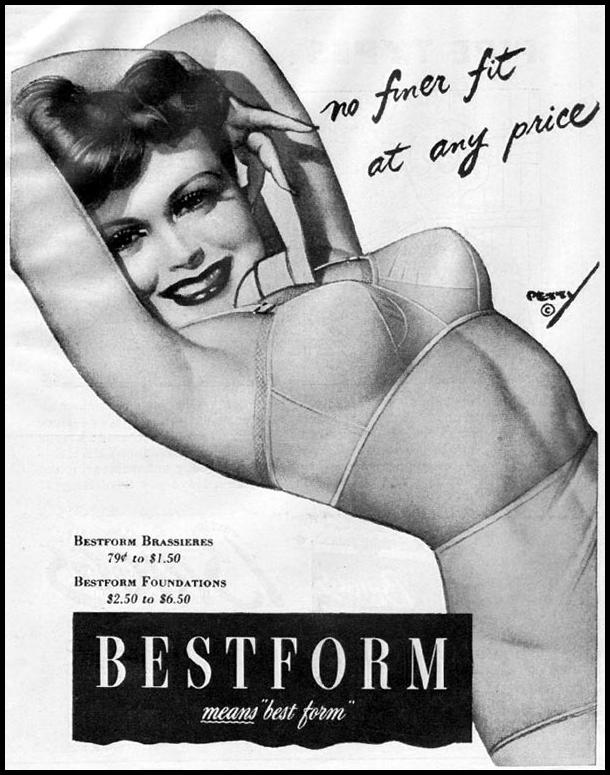
Bestform advertisement for Bestform Bras and Foundations: George Petty, Life, 23 October 1944 (Gallery of Graphic Design)

Bestform advertisement for Bestform Bras and Foundations: George Petty, Life, 13 November 1944 (Gallery of Graphic Design)

Bestform advertisement for Bestform Bras and Foundations: George Petty, Life, 13 November 1944 (Gallery of Graphic Design)

Berkshire Knitting Mills advertisement for Berkshire Stockings: Gladys Parker, Life, 16 December 1940 (Gallery of Graphic Design)
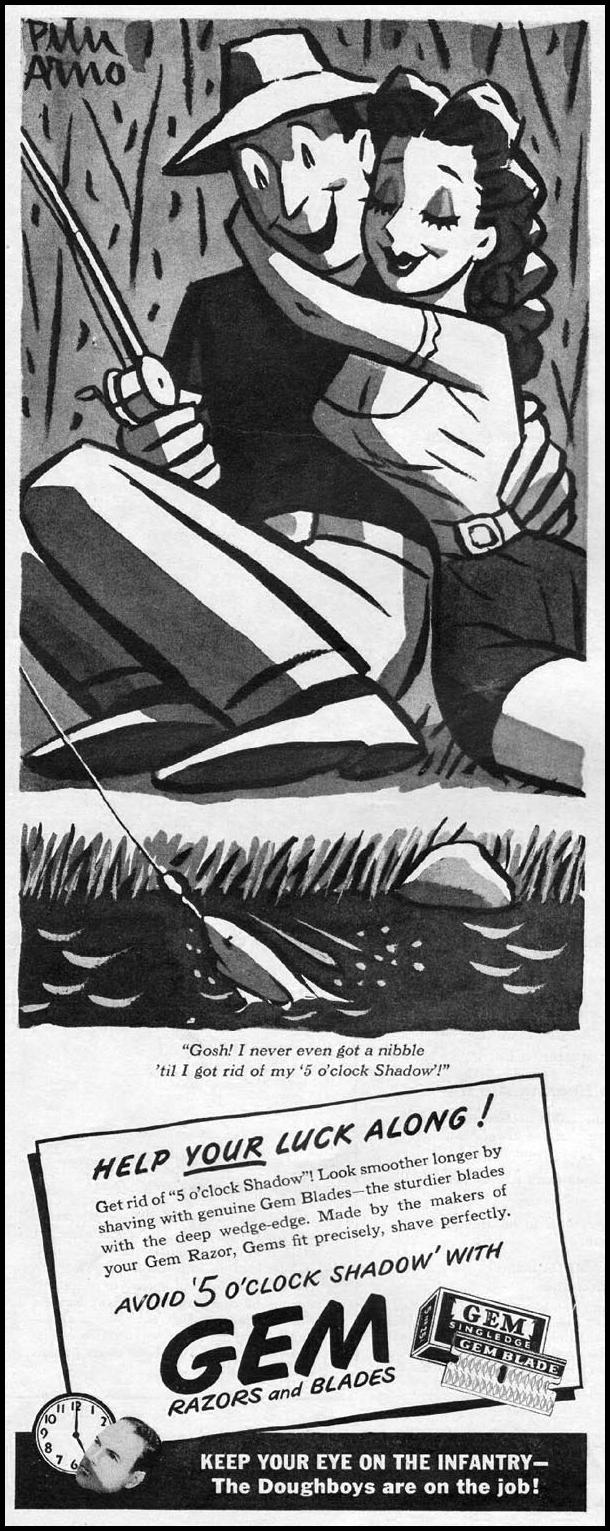
American Safety Razor Corporation advertisement for Gem Razors and Blades: Peter Arno, Life, 4 June 1940 (Gallery of Graphic Design)

Mennen advertisement for Mennen Brushless Shaving Cream: Richard Taylor, Life, 23 June 1941 (Gallery of Graphic Design)

Mennen advertisement for Mennen Skin Bracer: Richard Taylor, Life, 9 August 1941 (Gallery of Graphic Design)
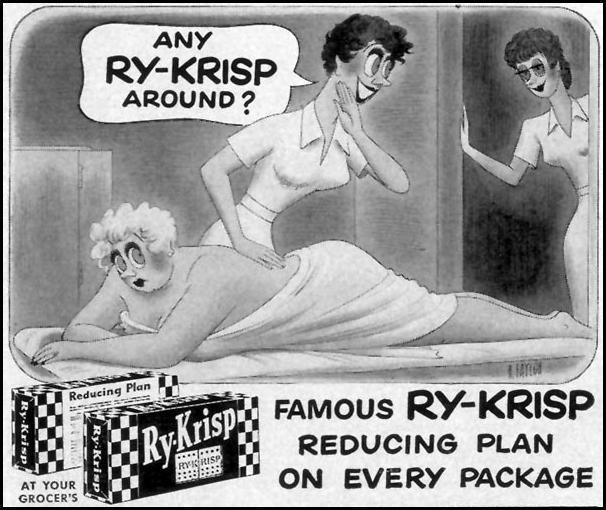
Ry-Krisp advertisement for Ry-Krisp: Richard Taylor, Life, 24 December 1941

Cluett, Peabody and Co. advertisement for Arrow Ties: Richard Decker, Life, 16 December 1940 (Gallery of Graphic Design)

Cluett, Peabody and Company advertisement for Arrow Ties: Richard Decker, Life, 30 November 1942 (Gallery of Graphic Design)

Brown and Williamson Tobacco Corporation advertisement for Sir Walter Raleigh Pipe Tobacco: Richard Decker, Saturday Evening Post, 19 May 1945 (Gallery of Graphic Design)

American Express Company advertisement for American Express Travelers Cheques: John Rosol, Life, 17 April 1950 (Gallery of Graphic Design)

Socony-Vacuum Oil Company advertisement for Bug-a-Boo Insecticide: James Thurber, Liberty, 8 August 1936 (Gallery of Graphic Design)
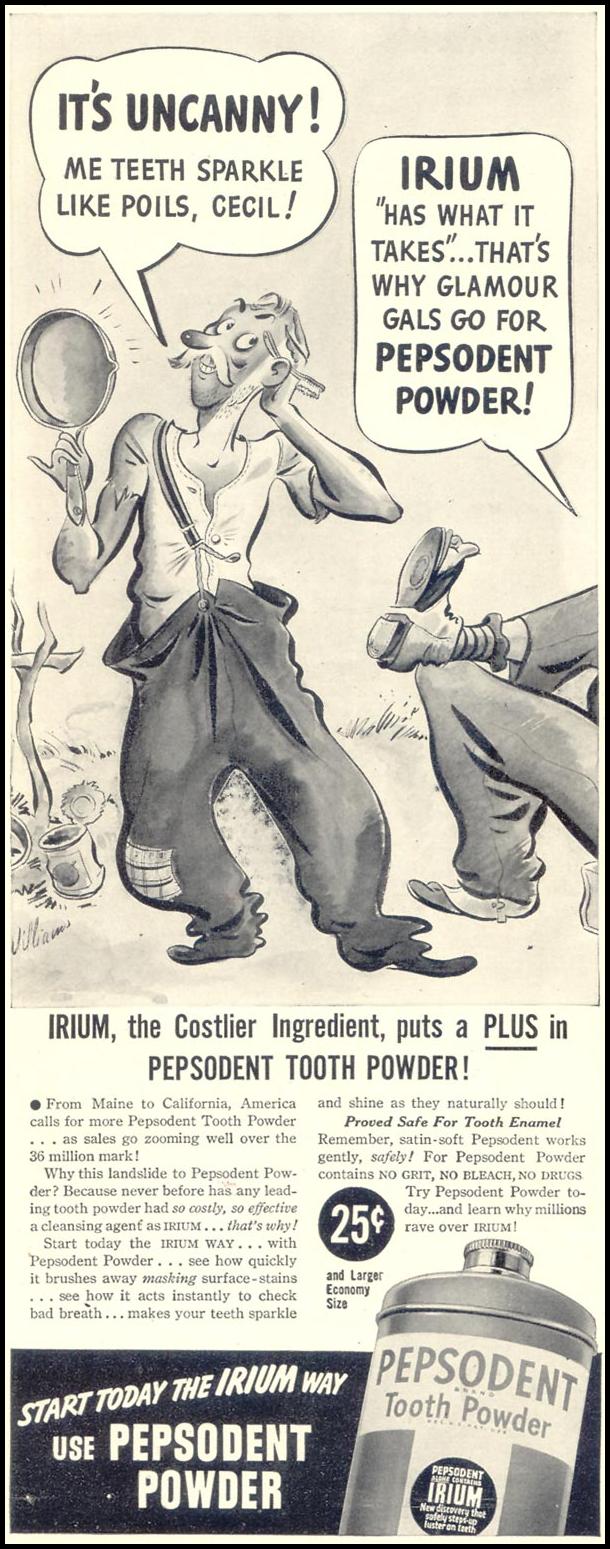
Lever Brothers advertisement for Pepsodent Tooth Powder: Dick Williams, Life, 24 July 1939 (Gallery of Graphic Design)

Durkee's Famous Foods advertisement for Durkee's Famous Sauce: Brickman, Woman's Day, 1 July 1955 (Gallery of Graphic Design)

Ace Hard Rubber Combs advertisement for hard rubber combs: F. C., Saturday Evening Post, 6 October 1945 (Gallery of Graphic Design)

Nicholson File Company advertisement for Nicholson Files: Chon Day, Saturday Evening Post, 6 October 1945 (Gallery of Graphic Design)

Webster Eisenlohr Incorporated ad for Daniel Webster Pipe Tobacco: Carl Rose, Saturday Evening Post, 19 May 1945 (Gallery of Graphic Design)

Hiram Walker and Sons advertisement for Hiram Walker's Ten High Bourbon Whiskey: C. A. Voight, Life, 22 June 1942 (Gallery of Graphic Design)
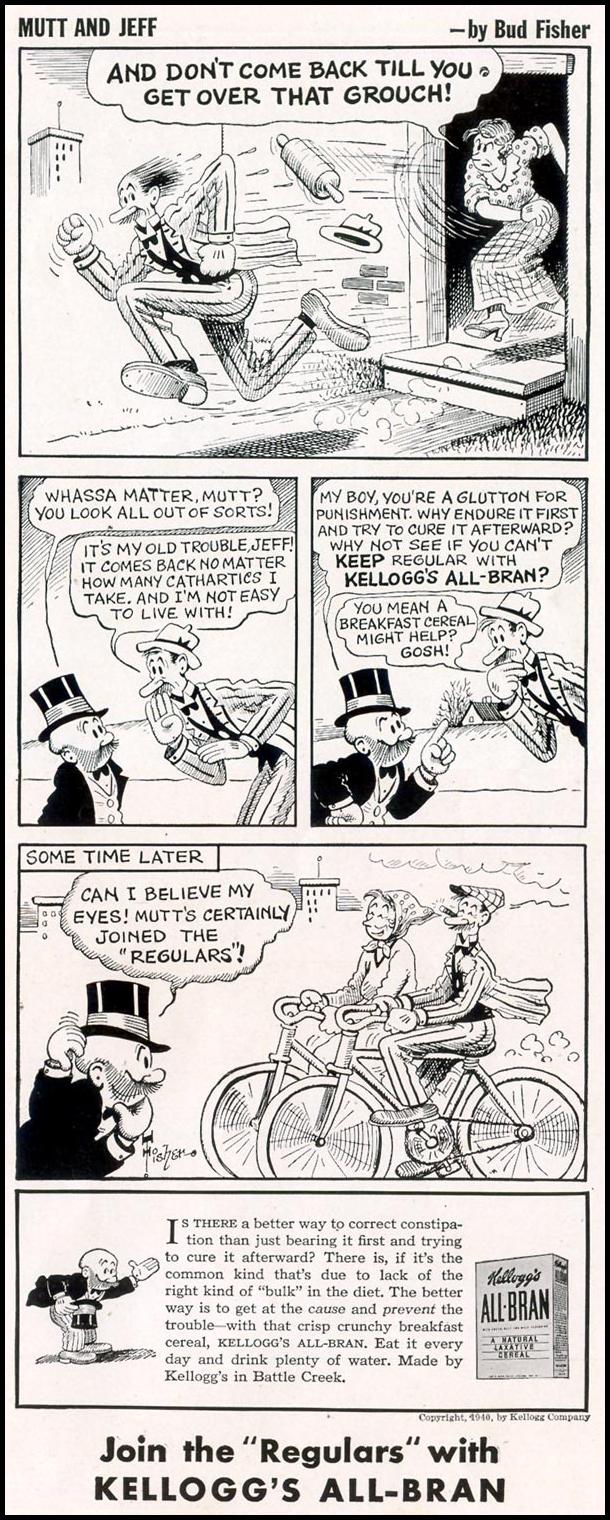
Kellogg Company advertisement for Kellogg's All-Bran: Bud Fisher, Life, 30 September 1940 (Gallery of Graphic Design)

Strunk Equipment Company advertisement for Strunk Chain Saws: Al Capp, Life, 19 October 1953 (Gallery of Graphic Design)
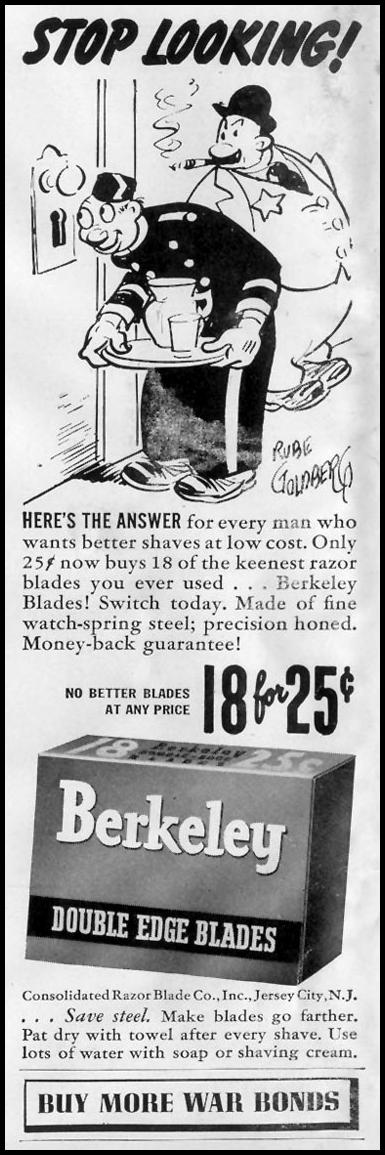
Consolidated Razor Blade Company advertisement for Berkeley Double Edge Blades: Rube Goldberg, Life, 18 January 1943 (Gallery of Graphic Design)

The Pennzoil Company advertisement for Pennzoil Motor Oil: Rube Goldberg, Life, 11 October 1943 (Gallery of Graphic Design)

The Pennzoil Company advertisement for Pennzoil Motor Oil: Rube Goldberg, Life, 8 November 1943 (Gallery of Graphic Design)

Lever Brothers advertisement for Pepsodent Tooth Powder: Dick Williams, Life, 24 July 1939 (Gallery of Graphic Design)

Durkee's Famous Foods advertisement for Durkee's Famous Sauce: Brickman, Woman's Day, 1 July 1955 (Gallery of Graphic Design)

Ace Hard Rubber Combs advertisement for hard rubber combs: F. C., Saturday Evening Post, 6 October 1945 (Gallery of Graphic Design)

Nicholson File Company advertisement for Nicholson Files: Chon Day, Saturday Evening Post, 6 October 1945 (Gallery of Graphic Design)

Webster Eisenlohr Incorporated ad for Daniel Webster Pipe Tobacco: Carl Rose, Saturday Evening Post, 19 May 1945 (Gallery of Graphic Design)

Hiram Walker and Sons advertisement for Hiram Walker's Ten High Bourbon Whiskey: C. A. Voight, Life, 22 June 1942 (Gallery of Graphic Design)

Kellogg Company advertisement for Kellogg's All-Bran: Bud Fisher, Life, 30 September 1940 (Gallery of Graphic Design)

Strunk Equipment Company advertisement for Strunk Chain Saws: Al Capp, Life, 19 October 1953 (Gallery of Graphic Design)

Consolidated Razor Blade Company advertisement for Berkeley Double Edge Blades: Rube Goldberg, Life, 18 January 1943 (Gallery of Graphic Design)

The Pennzoil Company advertisement for Pennzoil Motor Oil: Rube Goldberg, Life, 11 October 1943 (Gallery of Graphic Design)

The Pennzoil Company advertisement for Pennzoil Motor Oil: Rube Goldberg, Life, 8 November 1943 (Gallery of Graphic Design)

Auto-Lite advertisement for Auto-Lite Spark Plugs: Chester Gould, Life, 4 March 1966 (Gallery of Graphic Design)
John F. Jelke Co. advertisement for Jelke's Good Luck Vegetable Margarine: Robert Ripley, Life, 27 September 1937 (Gallery of Graphic Design)



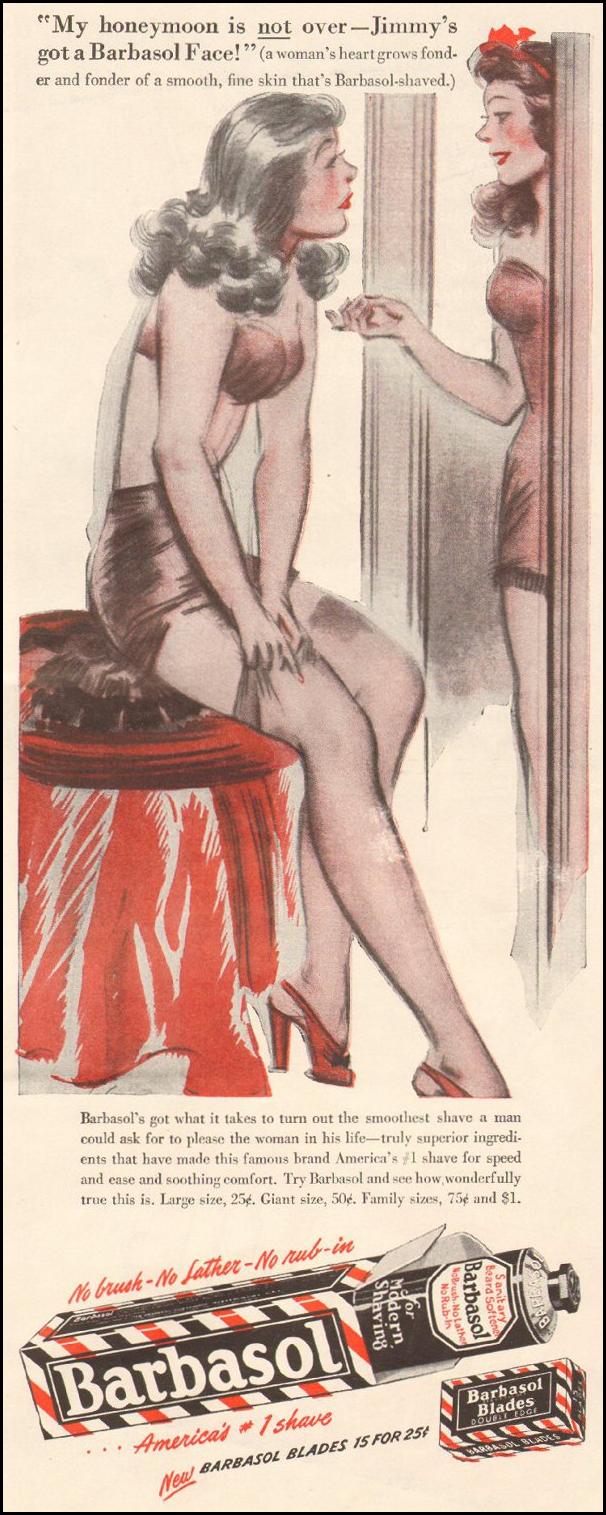

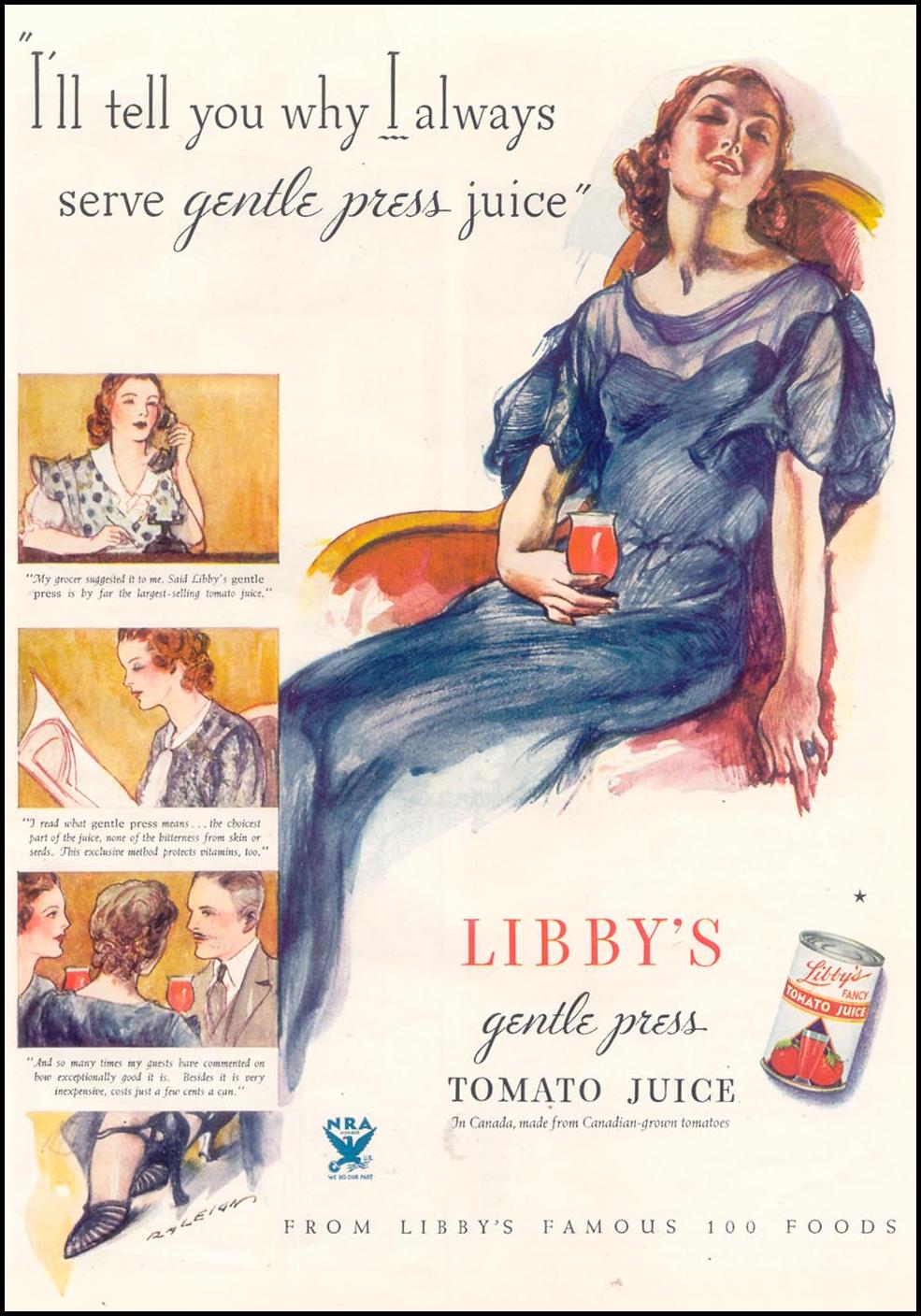

My father was for some years during my youth a traveling salesman, employed for a time by one of the companies advertising its products in this post. Somewhere in the ruins here there's still one relic of those years, his case of samples.
ReplyDeleteThese images thus bring back curious recollections. I accompanied him on a few trips. Waiting in the car on a baking dusty tall corn Iowa afternoon outside the John Deere plant, him inside trying to get orders for cardboard boxes. The intrinsic ignominy of the toil involved at the low end of the business of the purveying of Product.
You can bet Salvador Dali came top dollar, on the other hand. The top image here, a lovely piece of capitalist religious art.
I guess Dali was always selling something. He did love his gold.
ReplyDeleteCapitalist religious art is about right. The sociopolitical messages here are fascinating: they're working over every level of the psyche, affirming a social order, picturing the nation.
A good few half decent comic strip artists here.
Yes, descending that ladder of values and value, as on a spiral staircase. The tougher, more "realistic" attitude of the comic artists captures the lower levels of that psyche, that order. The appeal to class and then, as if on a corkscrewing ramp beneath, descending, the appeal to sex.
ReplyDeletePerhaps prescient in its comic vision is Rube Goldberg's mechano universe of horrors.
"... and she shakes her head 'Yes'..." -- even while being throttled by the mechanical arm.
Notwithstanding the front-end message (Save GAS for WAR!) Goldberg is being a subversive here. He has seen the Future, and it is a Data Center flipping its wig.
So much for Love.
Anybody interested in the history of modern advertising ought to check out this great documentary. It was always going to have to be Freud behind everything, wasn't it.
ReplyDeleteAdam Curtis: Introduction to The Century of the Self
Currently intermittently teetotal, I tossed and turned last night before finally descending into "I dreamed I ___ in my Maidenform bra" territory, which often happens on nights like this. (As you might imagine, the actual content of my dreams is disturbingly personal and usually dark and sad; it is the visual style and sometimes the language I hear that is redolent of these ads.) So I greet this trove of material a little less cynically than some people might and maybe I should. I love the way they look and they prompt a kind of rare happy nostalgia in me – great and intense memories of looking though magazines for hours in our basement den when I was very young and fantasy-joining the people on the pages in their various activities. Currently, I travel to Barnes & Noble once a week to check out the magazines and, as you know, they're mostly a sorry lot -- skinny, ugly things printed on terrible quality paper. Newsweek, by the end of its run, was simply ghastly to look at and horrible to touch. I really love the sexy Barbasol ad with the two women in lingerie and have always pondered the question: “what do women think of me?” I mean – who doesn’t? And my daughter started drawing Rube Goldberg-type machines when she was very young -- the product of a logical, engineering-type mind. Thanks for this. Curtis
ReplyDeleteThe Curtis documentary was one of the best pieces of television I've ever seen.
ReplyDeleteThe series in its entirety should be available here.
We sell diamonds and misogyny and smart phones and smart bras and smart bombs back-to-back, as slick as you please. Product. Move the merch. Art and advertising help make the lie seem true. Quantify the eyeballs-to-message-time and sell it. The art of the sale. Lewis Mumford said the only two forms of consciousness possible to denizens of the modern industrial state were those of ‘the conditioners and the conditioned, the active and passive barbarians." Needless consumption has become necessary for survival: note the decision by Chinese officials to remove 250 million subsistence farmers to large cities, where they are expected to be bona fine consumers of said Product. Money mojo, to bloster GDP. You are hereby assigned the right to be sold anything. Profits über alles.
ReplyDeleteThat mechanical throttling disturbed me also.
ReplyDeleteI'd watched that BBC documentary before. Fascinating. It left me with a hollow cold place in my chest, a feeling that we're always being toyed with, that reality is what's sold to us, that you have to take care. The lure of the material makes us easy marks.
A deep and disturbing post.
Pertinent comments all, giving rise to further thoughts, for which many thanks.
ReplyDeleteAccording to Adam Curtis's reading of the Bernays application of Freud's pleasure principle to modern public relations and advertising, that state to which Curtis R alludes -- restless pre-sleep tossing and turning, inchoate thought and brink-of-oneiric maidenform ideation -- is the fertile soil in which appetite for product is planted.
We can't help it. Our brains are made that way. Easy targets. And of course it can be a pleasant business, in the target-acquisition phase.
The Curtis series is one of those works that forever affects your view of its subject.
A 2002 pre-release review in The Observer by Tim Adams gives a fair account of the scope of the series.
How Freud Got Under Our Skin: Tim Adams on Adam Curtis' The Century of the Self (The Observer, 9 March 2002)
Some excerpts from the Observer piece:
ReplyDelete__
"Sigmund Freud may have invented the Self, full of unspoken dreams and desires, in 1900, but it was his American nephew, Edward Bernays, who packaged it and put it on to the market. Suddenly, everyone wanted one. And, of course, no one wanted one that was quite the same as anyone else's.
"Bernays, born in Vienna in 1891, had worked at the end of the First World War as a propagandist for America, and after 1918 he decided to carry on in this role. But he invented a brand new name for for his profession: public relations. He later turns up throughout the century - he lived to be 103 - as a kind of Zelig, shaping the American mind, with clients including Presidents Coolidge, Wilson, Hoover and Eisenhower, as well as Thomas Edison, Caruso, Nijinsky, scores of the largest corporations and many foreign governments. But his great genius was to first sell Uncle Siggy's ideas of the unruly subconscious to the American public and to American business.
"Bernays brought his uncle's books to America, found a publisher for them and discovered ingenious ways to advance the significance of their ideas in the mainstream press. He believed, like his uncle, that man was controlled by his irrational desires; he also saw that by applying the principles of psychoanalysis, these desires might be controlled and manipulated on a vast scale, for power and profit.
"Bernays was among the first to understand that one of the implications of the subconscious mind was that it could be appealed to in order to sell products and ideas. You no longer had to offer people what they needed; by linking your brand with their deeper hopes and fears, you could persuade them to buy what they dreamt of. Equipped with our subconscious wish-lists, we could go shopping for the life we had seen portrayed in the adverts.
"Happily, as Bernays realised, Uncle Siggy's creation - the great lasting invention of the twentieth century - arrived at a time when business, and American business in particular, through the techniques of mass production, and planned obsolescence, was suddenly able to satisfy those shifting desires. Like those little Japanese dolls that get bought at Christmas, and need feeding and nurturing, he knew that the Self, once owned, would prove very expensive of attention.
"It required all sorts of therapies and counselling, but most of all it needed to express itself - and one day it might want to express itself in one way, and the next it might want to do it in another. It was fickle, the Self, a follower of whim and fashion, and its only constant seemed to be that urgent aggressive fact of wanting.
"So, in Bernays's future, you didn't buy a new car because the old one had burnt out; you bought a more modern one to increase your Self-esteem, or a more low slung one to enhance your sense of your sex-appeal. You didn't choose a pair of running shoes for comfort or practicality; you did so because somewhere deep inside you, you felt they might liberate you to 'Just Do It'. And you didn't vote for a political party out of duty, or because you believed it had the best policies to advance the common good; you did so because of a secret feeling that it offered you the most likely opportunity to promote and express your Self. 'Our people,' said Herbert Hoover, 'have been transformed into constantly moving happiness machines.'"
Of course, magazine ads wouldn't have been so effective had they not been so well done.
ReplyDeleteAs it happens, a few years ago somebody dumped off a load of unwanted old Life magazines outside the local branch library. The library won't take donations, so in effect the magazines were simply awaiting garbage collection. But as that source happens to be our defacto bookshop, the magazines ended up here. I've been enjoying them for years. Brilliant stuff, the great large b&w photo spreads by top-notch photojournalists, the wonderful ad art done by skilled professional illustrators. There is no site on the internet that's half so much fun as the real thing used to be.
Of course Adam Curtis is right. We were being brainwashed. The media power had a window directly into our souls.
But if my soul is going to peeped upon, I'd prefer that it be through a window. Because the current "back door" procedure is far less pleasurable.
I agree with you, of course, about the "back door" vs. "window" differentiation.
ReplyDeleteBut it's interesting that people's receptivity to these ads varies greatly.
I've found that I'm pretty much unaffected by advertising in terms of items I purchase. Since many ads are targeted towards household products, I find that the products I actually buy are the ones my mother bought. I guess the ads of her era did their work unless she bought the products her own mother bought.
I do like seeing old tv ads on video and hearing radio versions of them on the Radio Classics satellite radio channel, but that's pure nostalgia for the jingles, etc., or the entertainment programs they bookended.
What offends me today is the propaganda advertising purchased at enormous taxpayer cost by our government supporting their programs. Obviously, the latest example is the Obamacare bombardment, which comes in a number of surreptitious guises.
The reason I buy Hello! magazine, the British weekly, isn't simply that I'm a superficial person in love with celebrity. I don't think I am, actually. I like the fact that it's still published in Life magazine format, features decent photography, fairly decent paper, and that to me it's basically a work of illustrated fiction, i.e., most of the celebrities they depict are completely unknown to me. So it's a relaxing imaginative exercise. Also, they publish some good recipes which are truly aimed at the busy, but slightly ambitious, home cook who doesn't have daily access to caviar and foie gras. It's a silly magazine in its way, but very well assembled and edited and often extremely (if unintentionally) funny. Shortly after Prince William married Kate Middleton, they devoted a few pages to the Buckingham Palace exhibition of Royal Wedding memorabilia, including Kate's dress presented on a life-sized dummy. As Hello! recorded it, both visually and in text, the Queen apparently told Kate that she thought the sight of the dress on the sightless mannequin was simply ghastly and the look on HRH's face told the story perfectly. You can't capture that properly in small format presentation and I call that good journalism.
Curtis
We should’ve figured as much--“Figures are fighting on every front” indeed—with the one at home the most conspicuous.
ReplyDelete